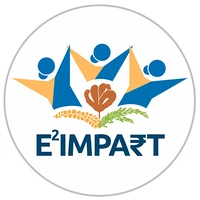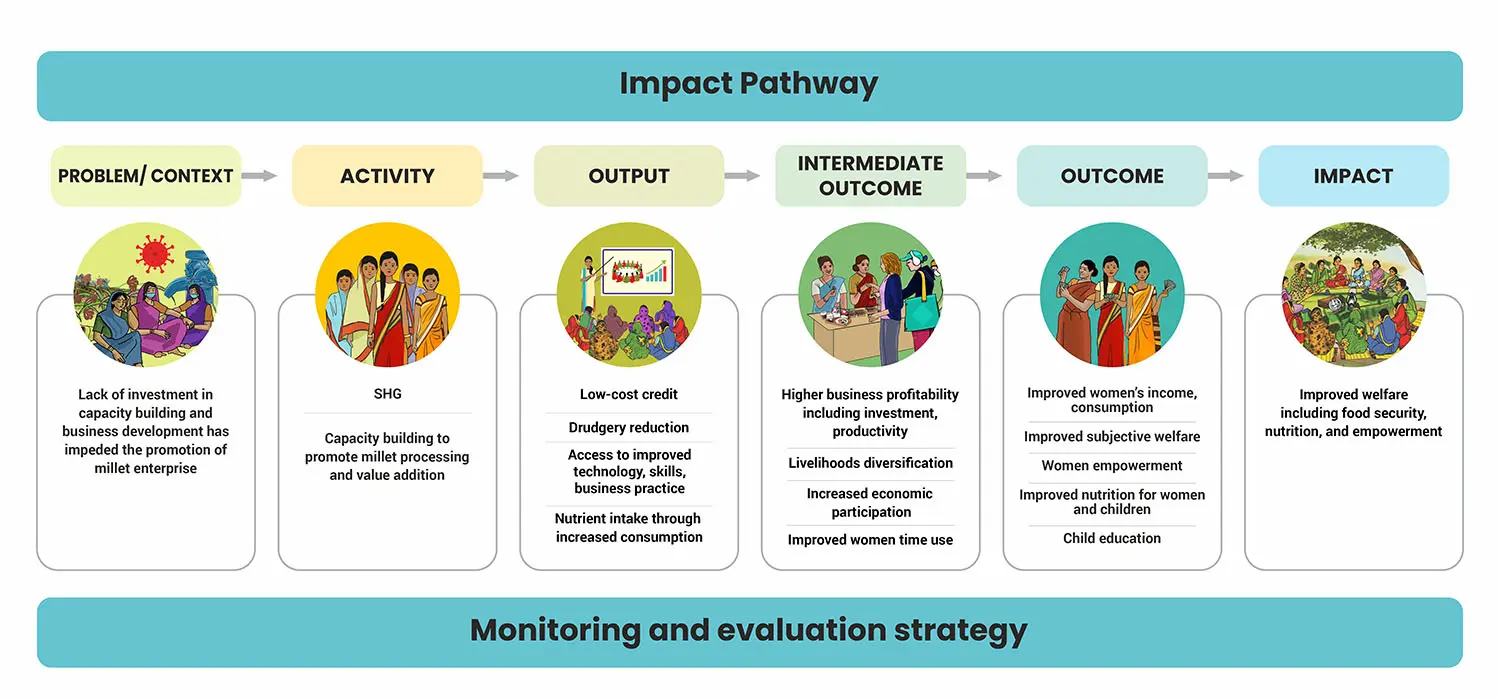Context and rationale
Key constraints to women's participation in millet enterprise are socio-cultural constraints, economic constraints, technological constraints including tedious postharvest operations, and lack of market information. The literature suggests that social norms can restrict women’s labour supply and their participation in microenterprises. Women’s participation in SHGs can empower women and help them overcome the social constraints to women’s economic activities. Drudgery-reducing equipment- like threshers, dehullers, etc. are provided by various initiatives. However, the lack of investment in capacity building, business development, and market linkages has, historically, impeded the promotion of millet enterprise.
While there is considerable evidence on the effects of interventions providing financial capital or training to women’s groups there is little available evidence from interventions that provide enterprise development or provide support through product development and strengthening market linkages.
Research goal
We use mixed methods to evaluate the effects of action-oriented training and capacity-building programme for promoting millet processing and value addition enterprises with women empowerment collectives. We employ a multi-arm cluster randomised control trial (RCT) to study the impacts of provision of support and services related to millet processing vis-à-vis provision of support and services related to millet processing and value addition and no intervention (a pure control).
Theory of Change
The millet processing intervention with the SHGs aims to increase business volume to make the enterprise viable for many value chain actors. The adoption of advanced millet processing machinery and methods will reduce drudgery work for women and improve their time use, which can impact children’s health, education, and nutrition. In addition, participation in SHGs may increase women’s access to credit that may be used in productive activities, including millet processing. This productive investment can increase household income as well as improve household consumption smoothing over time. The collective actions from both the SHGs and the millet processing enterprises, along with women’s control over income, can improve women’s ability to make decisions in the household, and this factor may interact with other impact pathways. For example, improved ability to make decisions within the household can enable women to allocate more resources towards child health, education, and nutrition. Overall, this approach may result in a positive effect on household and women’s income and other welfare indicators, as well as improving overall food security and nutrition in the household.
View detailed description of this diagram in PDF format
Project intervention
- Technical support to postharvest and processing of millets;
- Value addition through new product development;
- Enterprise development support;
- Gender-responsive training and capacity building; and
- Innovation, nutrition profiling and market linkage.







